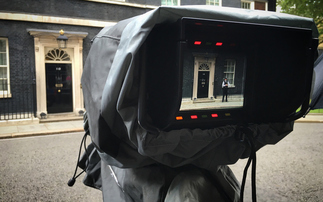After lockdown measures forced many staff to work from home in 2020, NatWest set out to rethink how it assesses its emissions
At the start of 2020, NatWest Group was targetting a 10 per cent carbon emissions reduction to help facilitate its transition to net zero. As a result of the Covid-19 lockdown, it is predicted this reduction will be significantly higher at 34 per cent.
At first, this seems like a victory in the reduction of own operations emissions. The travel ban had the largest impact with a 65 per cent reduction in Scope 3 business travel emissions. It wasn't all Covid related, as the greening of the grid had a positive impact as well. We can't rule out reductions due to the reduced capacity and closure of some of the offices although the energy reductions were somewhat less than anticipated as Covid-19 health and safety requirements meant that HVAC (heating, ventilation and cooling systems) had to be run 24/7 to flush out any chances of the virus lingering in the offices.
Colleagues that could, were working from home since March 2020. As the short term solution to the Covid-19 crisis turned into a longer term obligation, there was a real concern that emmisions saved from office building closures, were now being generated in the homes of colleagues.
To get to net zero in 2020, the Group would be offsetting emissions through a tree planting initiative. Measuring Scopes 1, 2 and 3 (business travel) emissions was the easy part and the group had been doing this for years. Capturing colleague emissions on the other hand was a new challenge. Sure, colleagues had been doing some working from home, but for some it was more of a time to get away from the distractions of the office to focus on a piece of work or catch up on admin. With smarter technology and devices, more and more of our tasks have become digitised. Colleagues no longer need to be tied to an office, and, for many, work can be done from any location that has a WIFI connection. Despite the technical ability to work remotely, there had been a relatively slow move to working more flexibly. The Covid-19 restrictions, however, emptied office buildings and fast-tracked remote working from home in an unprecedented way.
How do you capture the variables when every colleague has a unique carbon footprint based on their circumstances, lifestyle and contractual working hours? There's no legitimate way of collecting colleague's private data such as their distance or commute to and from work, or their home energy usage unless they volunteer this information. There is still then no way of knowing exactly what portion of their energy usage is attributed to work, especially if they are residing with others who are also occupying the residence during their working hours. As mandatory working from home was extended into the cooler months, colleagues couldn't just heat the space they were working in. By default, they had to heat up the entire house.
Initial thoughts were that carbon emissions saved from colleague commuting would cancel out emission from home working, but no research had been done to prove the point. Further consideration was given to whether colleague commuting should be captured voluntarily under Scope 3 emissions.
Assumptions had to be made, but for these measurements to be valid, the same criteria had to be adopted by other large organisations. There was now an urgent need for an industry standard methodology to measure working from home emissions.
Many other companies were in the same predicament. NatWest Group reached out to climate experts EcoAct, who took the initiative and got several companies working together on a solution. NatWest Group, along with Lloyds Banking Group, Bulb and several other large organisations partnered to do the research and create a working from home emissions whitepaper. Fact-finding was done through a staff survey to a selection of volunteers from the participating companies. The methodology centres on emissions from heating, cooling and IT equipment. These findings have been published in a collaborative whitepaper which can be downloaded from the EcoAct website.
With home working set to stay as part of a blended model in the new ways of working, this white paper will continue to be relevant even after the Covid-19 restrictions have been lifted.
This article was sponsored by NatWest







